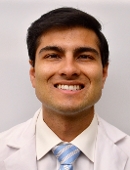Last Updated on June 23, 2022 by Laura Turner
Few days have a more profound impact on the lives of physicians in the United States than Match Day. Every March, thousands of medical students across the country find out where they will train in residency. Given that doctors have a tendency to practice in the state where they completed their training, the results of Match Day can have particularly long-lasting effects.
In 2019, 38,376 applicants submitted rank lists to The Match, nearly half of whom were fourth-year medical students pursuing MDs in the United States. 79.6% of all applicants, and 93.9% of these US medical students, ultimately matched to a first-year residency position. In other words, nearly 1 in 5 applicants, and 1 in 16 US medical students pursuing an MD, were unable to secure a residency position this year.
After investing years of work and hundreds of thousands of dollars in one’s education, the prospect of not matching can be terrifying. While not matching is often the result of rotten luck and a problematic system, there are several factors that raise the risk of this unfortunate scenario coming to fruition. To minimize their risk, medical students should have a good understanding of the most common reasons people have not matched in the past.
In that spirit, we will devote the rest of this article to discuss some of the most common reasons medical students do not match:
Applicant status
As of 2019, fourth-year medical students at US allopathic medical schools have an advantage over other applicants when it comes to the Match. The most recent data from 2019 bear this out: while 93.9% of US allopathic seniors matched, only 84.6% of American osteopathic medical students, 59.0% of US citizens at international medical schools, and 58.6% of non-US citizens at international medical schools successfully matched.
Specialty choice
Some specialties are more difficult to match into than others. For example, while only 83% of US allopathic seniors and 36% of US osteopathic seniors who applied to dermatology matched in 2018, 96% of US allopathic seniors and 91% of US osteopathic seniors who applied to family medicine matched. As mentioned above, in both fields, non-US international medical graduates faced significant obstacles: only 44% and 41% matched in dermatology and family medicine, respectively.
There is wide variation in the match rates across specialties. In 2018, the specialties with the lowest match rates for US allopathic seniors were interventional radiology (58.3%), dermatology (81.6%), orthopedic surgery (82.4%), and general surgery and psychiatry (84.0% each). Child neurology (99.0%), pediatrics (98.8%), internal medicine (97.9%), pathology (96.4%), and anesthesiology (96.0%) had the highest match rates.
Interviewing and interpersonal skills
The Association of American Medical Colleges consistently rates poor interviewing and interpersonal skills as one of the main reasons that applicants do not match. Residency program directors strongly agree. In fact, in 2018, the top three factors they cited most frequently in determining whom to rank on their match lists were “interactions with faculty during [the] interview and visit” (96%), “interpersonal skills” (95%), and “interactions with house staff during [the] interview and visit” (91%). In other words, the interview itself is a pretty big deal.
In many ways, the Match process is tilted to favor residency programs. Programs are effectively allowed to limit their pool of prospective residents by only interviewing applicants who meet certain academic cutoffs (for example, by winnowing out applicants using Step 1 scores and grades). Applicants who are selected to interview are generally more than capable of learning and completing the job effectively. In the absence of substantial academic variation between prospective residents, interpersonal skills and emotional intelligence, as evidenced by an applicant’s interactions on interview day, become extremely important. Not only does every program want to match residents who are easy to work with and good with patients, but there is also some evidence that the faculty’s evaluation of an applicant’s interview performance best predicts his or her future clinical performance.
Standardized test scores
Matched applicants, on average, have higher standardized test scores than unmatched applicants. For example, the mean Step 1 and Step 2 CK scores of matched US allopathic medical students in 2018 were 233 and 246, respectively. In contrast, the mean scores of unmatched US allopathic seniors were 224 and 236.
In every specialty, students with higher Step 1 and Step 2 CK scores match at higher rates. This should be unsurprising—residency program directors consistently rate standardized test scores (especially Step 1) as among the most important factors when ranking applicants.
Grades
As with standardized test scores, mediocre grades in required clerkships and elective rotations, especially in one’s chosen specialty, can harm a medical student’s chances of matching. In the 2018 NRMP Program Director Survey, 76% of residency program directors cited grades in required clerkships and 67% cited grades in clerkships in the desired specialty as important factors in choosing which medical students to interview for residency positions. Additionally, 81% cited the Medical Student Performance Evaluation, or Dean’s Letter, as an important factor, which serves as a summary of an applicant’s performance in medical school and incorporates his or her clerkship grades.
Red flags
“Red flags” are serious blemishes on a residency application that, on their own, can sink a medical student’s chances of successfully matching. They include concerns about professionalism or ethics, failing a rotation or standardized test, damaging letters of recommendation, and the existence of unexplained gaps in medical school. These factors, unfortunately, may call into question a medical student’s ability to successfully complete a residency program. Concerns about ethics or professionalism can be particularly detrimental—American medicine has been built around the sanctity of the patient-provider relationship, which is based on honesty. Any concerns about a future practitioner’s truthfulness or ability to work with others can seriously jeopardize one’s chances of matching.
Risk management
Of all the factors above, “risk management” is perhaps the most complex to consider. All of the factors listed above will negatively impact the probability of matching. However, none of them, even a red flag, guarantees that a medical student will not match. Thus, to forestall this possibility, proper risk management is essential.
Let’s briefly discuss this concept further. Before applying to a particular specialty, I would recommend thoroughly examining “Charting Outcomes in the Match,” an annual research report released by the NRMP that compares the application characteristics of matched and unmatched applicants. If you notice that the characteristics of your application are on par with or better than those of the application of the average matched applicant in your desired specialty (for example, in terms of standardized test scores, research experiences, volunteer experiences, et cetera), then you will be competitive in the match process. On the other hand, if you notice that your application falls short, do not be discouraged—you may still apply to that specialty. However, you should strongly consider taking some additional measures to ensure that you are able to match.
So what sort of steps should you take? There are a few ways you can mitigate your risk. One is to increase the number of programs you apply to. For every specialty, the more programs one ranks on his or her match list, the higher the probability of matching. The only way to increase the number of programs you can rank is to maximize the number of interviews you go on, which in turn is linked to the number of programs you apply to.
Where medical students can get in trouble on this issue is by artificially limiting their rank lists. One of the ways this most commonly manifests is through geographic restrictions. By only applying to programs in particular areas of the country, especially those far away from your medical school or listed home address, you can shrink the potential pool of programs you can ultimately rank, lowering the chances of a successful match.
I should stress that competitive applicants can fall into this problem, too. The odds of not matching increase for any applicant, regardless of the strength of the accompanying application, if he/she/they do not apply widely enough and rank a sufficient number of programs.
Another way to reduce risk is to consider applying to a backup specialty. This concept is analogous to the idea of “safety schools” when applying to college. While ending up in a backup specialty may not seem like an ideal solution, it may at least preclude the possibility of not matching. This strategy can be especially useful in fields like interventional radiology and dermatology that have low match rates, even for US allopathic seniors.
How individual medical students choose to manage risk will be unique. For some, applying to more programs or multiple specialties on their own will be enough. For others, a combination of the two strategies may be necessary. The precise course of action should be determined by the competitiveness of the residency application. If you are unsure how to proceed, I would recommend sounding out your medical school’s student adviser to get a second opinion.
Hopefully, this article has been helpful in illuminating some of the most common reasons medical students do not match. To close, it is worth emphasizing how devastating it can be not to match. Please be respectful of your unmatched colleagues and offer them your support.



I’m pretty sure US DO’s have a higher MATCH rate, when considering the DO match as well. It will be interesting to see the stats this upcoming year with the single accreditation post graduate training in full effect.